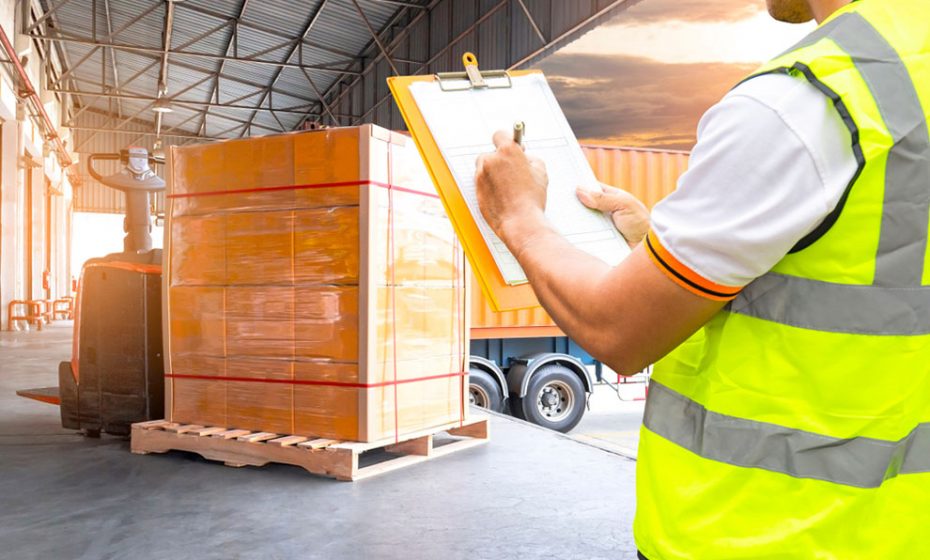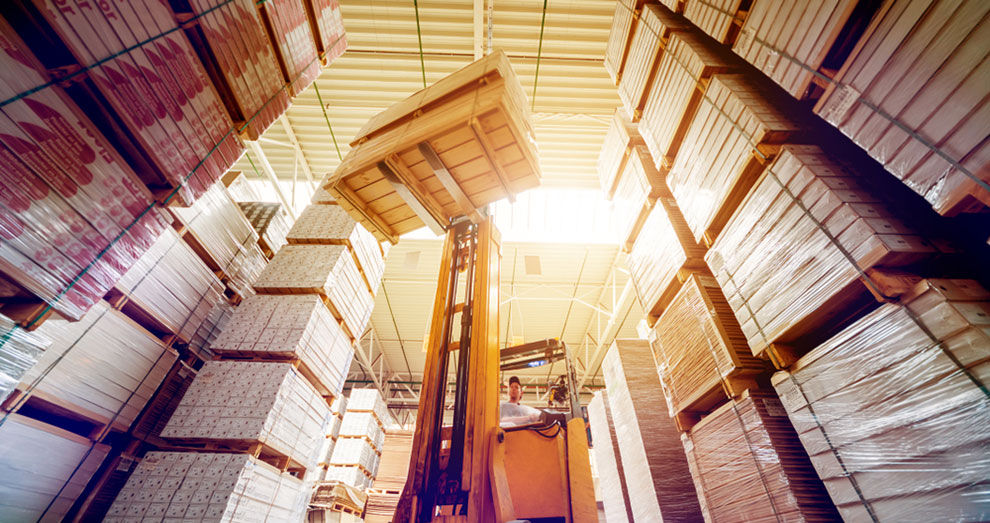Trying to get a heavy load off the ground? You’ll need a strong pallet. But exactly how much can a pallet hold? The short answer: most standard pallets can carry up to 4,600 pounds. How much weight a pallet can hold is highly dependent on how it’s being used, as well as its size, weight, and other factors.
Upgrade Your Old One with a New Pallet Container
It’s an important question with a surprisingly complicated answer. Not all pallets are the same, as some can handle significantly more while others handle less, especially when factoring in material and design. There are lots of different types of pallets to choose from, so it all depends on what you have on hand.
Why Does the Average Pallet Weight Capacity Matter?
Choosing the right pallet isn’t only about dimensions or material; you also have to ensure your load is safe and efficient from the start of the journey to the end.
When moving any type of pallet load — no matter whether lightweight goods or bulk materials — understanding what your pallets can realistically handle will help you protect your team, your inventory, and your bottom line.
Source: Andrei Mayatnik/Shutterstock.com
Load Capacity and Standard Pallet Dimensions
Most traditional pallets are designed to hold common warehouse loads, but capacity varies widely. While a standard pallet weighs around 30 to 50 pounds, it can often support up to 4,600 pounds, depending on the build and condition. Don’t rely on assumptions, always check the pallet specs.
Personal Handling & Safety
When a pallet breaks unexpectedly, it puts workers and products at risk. Pallet failure from exceeding weight limits can lead to dropped loads, tipping, or splintering, especially during manual handling or forklift transport. These failures can cause serious injury, strain, or workplace accidents, making proper weight limits essential for safety.
Shipping Costs
Heavier pallets can push freight into higher cost brackets. Choosing the right weight-rated option, like heavy-duty plastic pallets, helps reduce overages while maximizing space and efficiency.
Cost of Pallets
Higher weight capacity often means higher upfront cost. But investing in stronger materials can lower replacement frequency, making it more economical in the long run.
Source: Roman Zaiets/Shutterstock.com
Types of Pallets and Their Construction
Before we get started, it’s always best to check the owner’s manual. Contact the original manufacturer for a more precise answer to your question. You should always know the limits of your pallets before putting them into rotation.
Overloading the pallet will shorten the lifespan of the product, forcing you to invest in new storage materials. This also increases the chances that the pallet could collapse beneath the weight, putting your entire storage system at risk.
Stringer Pallets
This type of pallet gets its name from the “stringers” or beams of wood that run across the pallet to help support the weight. Two-way stringer pallets can be accessed from either the front or the back, while four-way pallets are accessible from all four sides.
Wood pallets built with parallel and perpendicular stringers come with a rackable load capacity of 2,500 lbs., a dynamic load capacity of 2,200 lbs. to 2,500 lbs., and a static load capacity of 2,500 lbs.
Block Pallets
A block pallet is a four-way pallet that comes with solid posts in the middle to further support the weight. These kinds of pallets can range in size and shape, but they can hold considerably more weight than stringer pallets.
Wooden block pallets come with a rackable load capacity of 2,800 lbs., a dynamic load capacity of 4,600 lbs., and a static load capacity of 5,500 lbs.
Solid Deck Pallets
Solid deck pallets offer a solid, flat surface as opposed to deck boards for smaller or packaged goods. They’re less likely to pick up dust, so they are used in a lot of food or pharmaceutical manufacturing. These pallets are also easier to clean and ideal for sanitary, closed-loop distribution systems.
Plastic Pallets
As you might expect, plastic pallets can hold even more weight. Wooden pallets aren’t the most reliable. They are generally used for short-term shipping and storage. They can also bend, warp and disintegrate over time, which will limit their lifespan and weight capacity.
Plastic pallets are much more durable than those made with wood. They will hold up in the rain while retaining their physical dimensions so your load won’t get rejected.
The load capacity varies based on the type of plastic, so be sure to check with the manufacturer. A plastic pallet comes with a rackable load capacity of 2,800 lbs., a dynamic load capacity of 5,000 lbs., and a static load capacity of up to 30,000 lbs.
Metal Pallets
Metal pallets are more durable than plastic pallets, but they may not hold as much weight, depending on how they were constructed.
A stainless steel pallet may come with a rackable load capacity of 2,200 lbs., a dynamic load capacity of 4,000 lbs., and a static load capacity of 8,000 lbs.
Wood Pallets
Today, the most popular choice in warehouses is wood pallets. They’re cost-effective, easy to repair, and available in standard sizes. You’ll also find options made of recycled wood. But they’re susceptible to moisture, splintering, and structural wear and tear. Inspect wood pallets before reusing them to prevent pallet failure or weight-related incidents.
Maximum Weight Capacity Based on the Type of Pallet
The weight capacity varies based on how the pallet was made. The more durable the pallet, the more it can hold. Use this quick reference table to compare edge rackable, dynamic, and static load capacities across common pallet types.
| Pallet Type | Edge Rackable Load Capacity | Dynamic Load Capacity | Maximum Static Load Capacity |
| Stringer Pallets | 2,500 lbs. | 2,200-2,500 lbs. | 2,500 lbs. |
| Block Pallets | 2,800 lbs. | 4,600 lbs. | 5,500 lbs. |
| Solid Deck Pallets | 2,800 lbs. | 3,500 lbs. | 5,000 lbs. |
| Plastic Pallets | 2,800 lbs. | 5,000 lbs. | 30,000 lbs. |
| Metal Pallets | 2,200 lbs. | 4,000 lbs. | 8,000 lbs. |
| Wooden Pallets | 2,500 lbs. | 2,200-2,500 lbs. | 3,000-4,000 lbs. |
What Factors Affect a Pallet’s Weight Capacity?
The weight of goods a pallet can support isn’t always determined by its material alone. How it’s built, where it’s stored, how old it is, how it is used… all affect what the pallet can safely support. Failure to think about these may lead to pallet failure, product damage, or worse, unsafe warehouse conditions.
Material Quality
Stronger materials lead to stronger pallets. Rackable plastic pallets and metal options typically hold more weight than wood, especially under constant use. Higher quality materials also hold up better against moisture and frequent handling with a pallet jack.
Pallet Sizes and Design
Weight capacity can vary based on design. Common pallet dimensions like 48×40 inches offer a reliable standard, but heavier loads may require custom designs. Pallets with additional support beams or thicker deck boards offer better weight distribution and resistance to sagging.
Pallet Age
The older a pallet gets, the more likely it is to weaken. Moisture exposure, repeated impacts, or structural fatigue can all affect performance. Regular inspection of used or empty pallets helps identify damage before it becomes a problem.
Load Distribution
Pallets perform best when loads are evenly distributed. Uneven loads create stress points and increase the risk of tipping or collapse, especially in motion or on pallet racking systems. Spreading weight across the entire surface reduces strain and helps extend the pallet’s lifespan.
Environmental Conditions
Storage and usage conditions also affect performance. Exposure to heat, cold, or chemicals can compromise certain materials. For example, wood may swell or rot over time, while plastic retains its shape better. Keeping pallets dry and sheltered protects their structure and load capacity.
Why the Right Pallet Matters for Your Supply Chain
There’s no universal answer to pallet weight capacity, because the right pallet depends on what you’re storing, how you’re moving it, what kind of racking system you use, and where it’s going. From GMA pallets used by grocery and beverage manufacturers to double-face pallets built to support heavier loads, you’ll find solutions designed for standard shipping, bulk transport, cold storage, and more specialized applications.
Using the wrong pallet or overloaded pallets can strain your floor space, damage inventory, increase handling time, and create safety risks for your team. That’s why it’s important to choose high-quality industrial pallets that match your operation’s needs. Whether you’re working with plastic material, wood, composite blends, or specialized pallets designed for unusual product dimensions, always factor in pallet lengths, environment, handling method, and total load type before making a purchase.
Not sure how many standard pallets you actually need or which type will save you the most over time? Container Exchanger is here to help. We offer a wide range of new and used pallets, including double-wing pallets, GMA-approved options, and reliable builds for medium-duty industrial loads.
Shop with confidence and upgrade your pallet system at Container Exchanger today.


